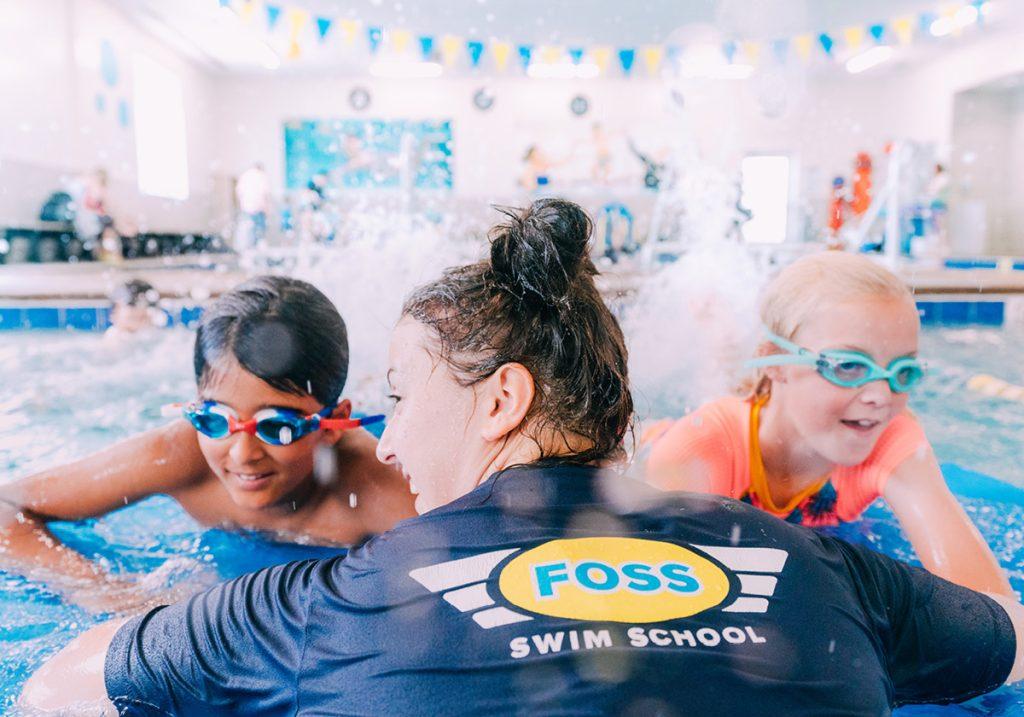This article was adapted from content originally published on FossSwimSchool.com.
Every kid should have the ability to help themselves if they unexpectedly fall into the water. And it’s each parent’s job to help their child be as prepared as possible.
Foss Swim School has a six-step guide for effective life-saving actions in the case of an emergency. They encourage you to make sure that, wherever your child learns swimming, these basic steps are taught and reviewed (including practicing in regular clothing, such as a t-shirt).
The best approach to water safety—avoid danger.
Self-rescue is an important skill, but hopefully one that a child will never need. It’s important to know what to do if a child falls in the water alone. But also to take steps to avoid this ever happening.
Parents should:
- Supervise children closely – an adult should always have eyes on kids near water.
- Rotate supervision among adults – implement a plan to hand off formal watching duties.
- Turn off your phone – even a brief distraction can be too much.
Teach kids to:
- Always ask permission to enter the water – make sure the adult sees, hears and understands (grabbing their hand if needed).
- Never swim alone – have a friend with them and an adult watching at all times.
- Don’t reach for objects dropped in the water – it’s an easy way to fall in, so get help instead.
Kids are never too young to start learning water safety.
Of course, there is no such thing as being drown-proof, but each additional level of swimming skill reduces the likelihood of drowning.
The following steps can be taught to very young children. Even at six months a child can begin to learn the first three steps! One step builds on each another, and each step increases the child’s safety.
6 Tips to Remember for Water Safety
1. Teach Kids to Stay Calm
Resist panic by remaining calm around water. Children are better able to reach safety in the water if they are in a calm state.
2. Return to the Surface
Hold their breath; trapped air assists with buoyancy! Teach kids to resist exhaling or thrashing, and use simple swim motions.
3. Float to Breathe
This is the safest position for a child to breathe. A child’s head is heavy relative to their body, so trying to float upright or on their tummy is dangerous. Learning how to flip is a simple skill and a child floating on their back has a greater chance of rescue already.
4. Find the Wall
Falling in the water usually means safety is nearby — at a dock, the edge of a pool, a boat, or floating platform. Once a child is on his or her back, they can look for that safe place.
5. “Swim-Flip-Swim” to Safety
To get there, a child who knows all the steps should know to flip onto their tummy, swim a short distance, flip back over onto their back to breathe, and then repeat as needed.
6. “Elbow-Elbow-Squeeze” Once on a Wall
Upon reaching something solid, if the height is near water level (like a pool), a child can complete self-rescue. Don’t have them try to crawl out – get an elbow up, then the other, then squeeze them together to lift the body. Otherwise, grab on and call for help.
Teaching your children these six skills can help them be safe in and around water this summer!









 Ready to enroll your child in swimming lessons?
Ready to enroll your child in swimming lessons? 







